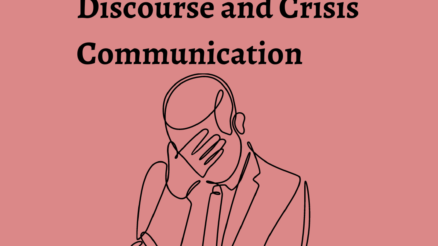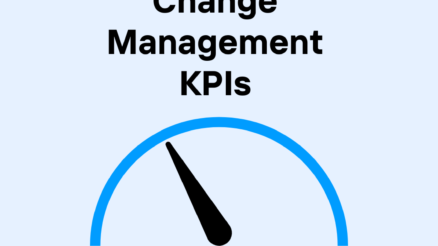What is DICE Framework?
Many organizations take up change initiatives but only a few succeed in achieving the goal. We have many theories, models and frameworks which explain drivers of change, process of change and how it is implemented but still there is no consensus on what is that one single formula which ensures success of change. Every management scientist or practitioner offers different solutions to make change meaningful and successful.
Through years of experience in managing change, The Boston Consulting Group (BCG) developed DICE framework to predict the future or success of change initiative. DICE framework acronym stands for Duration, Integrity, Commitment and Effort. These four critical areas determine the future of change and help leadership to make the execution of their initiative in the right direction.
Factors of Dice Framework in Change Management
Let’s dig deeper into what exactly are the four factors of DICE framework.
Duration
Organizations and change leaders often become nervous about duration of change initiative. The longer the project or change, the greater risks are attached to its success. The key to address this worry is to have more frequent assessments and critical reviews of projects of longer duration. If leaders are reviewing progress on weekly and monthly basis and taking corrective actions, then projects remain on the right path. Whereas leaders feel relaxed and have less frequent reviews of the project of shorter duration, which often cost them heavily and objectives are not met on time or projects may result into utter failure.
Integrity
This is all about the quality of human resource who is leading and implementing change. Integrity involves skills, experience and motivation level of change leaders and employees. This is such a crucial factor that success and failure of change initiative largely depends on it. Organizations need to be very careful while picking up their teams for change programs. The team should be able to take critical decision on time and capable of resolving conflicts and getting through difficult times and odds of change. Above all the change leaders have extraordinary communication skills which is key to success of change initiative.
Commitment
Commitment is the basis of success. When an organization is pursuing a difficult path like that of change then it demands one hundred percent commitment from top to bottom. Top managers and leaders must show the commitment by communicating the purpose and objective of change and what does it take from employees. And employees must show their commitment by performing the day to day routine work on timely manner.
Effort
Effort refers to how much work is required to implement change. It takes more than the routine work to implement change. Employees who are busy with their routine work they are expected to go extra mile to perform task which are required for change initiative. However, employees can manage extra ten percent work with their experience, skills and motivation level but more than this would be problematic in the future. They might begin to resist the extra work so management should be careful about this that how much effort is required to complete the additional tasks.
How to Calculate Outcome/Future of Change Initiative?
In DICE equation, all the above mentioned factors are combined to calculate the probability of success of change initiative. Each factors are graded in score from 1-4 where 1 being the best and 4 is the worst. Organization should adjust according to their own needs and requirements. To understand scoring of factors or variables, an example is given below in the matrix.
| Factors | Question | Score |
| Duration | How often does review of change initiative happens? Does it happen regularly? How long it will take to complete project? | Review happens in 1 month = 1 Rreview happens in 2 months = 2 Review happens in 3 months = 3 Review happens in 4 months = 4 |
| Integrity | Does change leader and its team posses required skills and experience? Does change leader and its team posses required motivation level? | Team posses 80% or more than required skills = 1 Team posses 60% or more than required skills = 2 Team posses 40% or more than required skills = 3 Team posses 20% or more than required skills = 4 |
| Commitment (Senior level C1) | Does senior management effectively communicate to team on purpose of change? Is the message is convincing ? | Clarity of message at excellent level =1 Clarity of message at good level =2 Clarity of message at ordinary level =3 Clarity of message at poor level =4 |
| Commitment (Senior level C2) | Are employees given opportunities to share their feedback? Are they supportive to change leaders to implement the change initiative? | Relationship between team is at excellent level =1 Relationship between team is at good level =2 Relationship between team is at ordinary level =3 Relationship between team is at poor level =4 |
| Effort | How much extra work will be performed by employees? Are the employees comfortable with the extra work? | If the extra workload is below 10% = 1 If the extra workload is 10-20% = 2 If the extra workload is 20-30% = 3 If the extra workload is 30-40% = 4 |
DICE Equation to Calculate Success Score
Following is the DICE equation which help to calculate the success score of any change initiative:
DICE Score = D + (2xI) + (2xC1) + C2 + E
By using the aforementioned equation, you may have a DICE score between 7 and 28. Here is how to see the results and predict the future.
- If you get 7-14, then your project is a success
- If you get 14-17, then you are under the risk of failure
- If you get 17 and more, be careful, as you are too near to losing the game
Advantages of DICE Framework
- DICE framework use hard factors which are easy to measure. On the other hand, it is difficult to measure soft factors.
- These factors can be easily communicated and influenced and which increase the chances of success.
- It is the first framework which provide leaders with a scientific evidence to implement change or make alteration in the plan to avoid failure.
- It also helps leaders to assess and evaluate change initiative and take informed decisions.
Disadvantages of DICE Framework
- This framework completely ignores the soft factors which are equally important to be taken into account for change to happen.
- It is difficult to score factors on objective basis; one can be subjective which can negatively impact the result.
- This framework only provides with the assessment of change project or its feasibility but it does not offer solutions and strategies about how to execute change project.
Take Home Points
- DICE framework presents an equation of four factors which help managers and leaders understand whether their change initiative is feasible or not.
- First, duration which is about how long is project and how much reviews are undertaken to assess its progress.
- Second, integrity, which is about how much employees and team is capable to undertake the change
- Third, commitment is about how much leaders and employees are communicating on change initiative.
- Fourth, effort is about how much extra mile employees are asked to go to implement the change.
- This framework offers scientific evidence for assessment of an organization and employees before taking decisions to adopt change.
- Yet the scoring might be subjective; every employee or manager have different understanding of the factors influencing the change.
- Therefore, it is always recommended to have third party on board to use this framework to ensure subjectivity.



